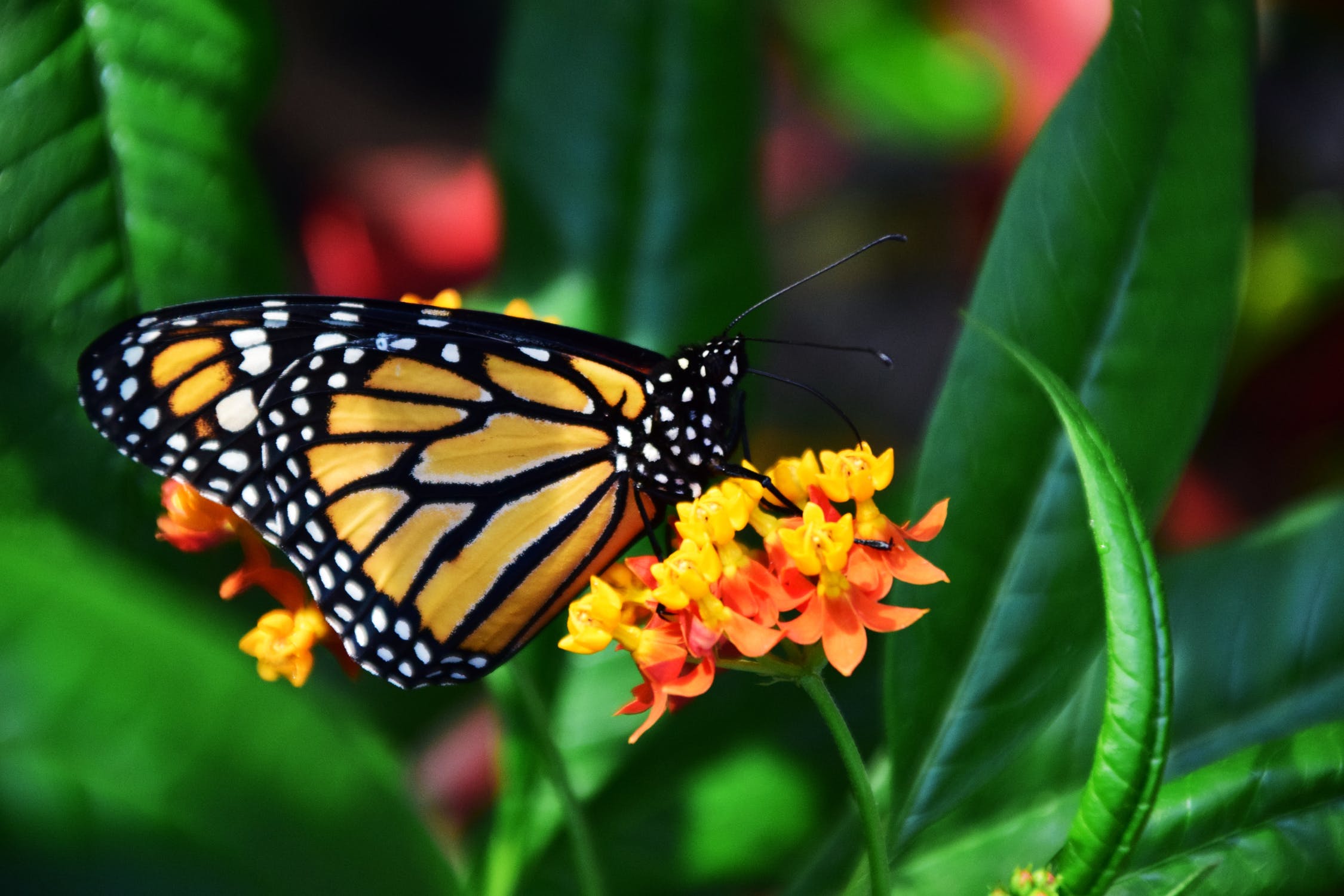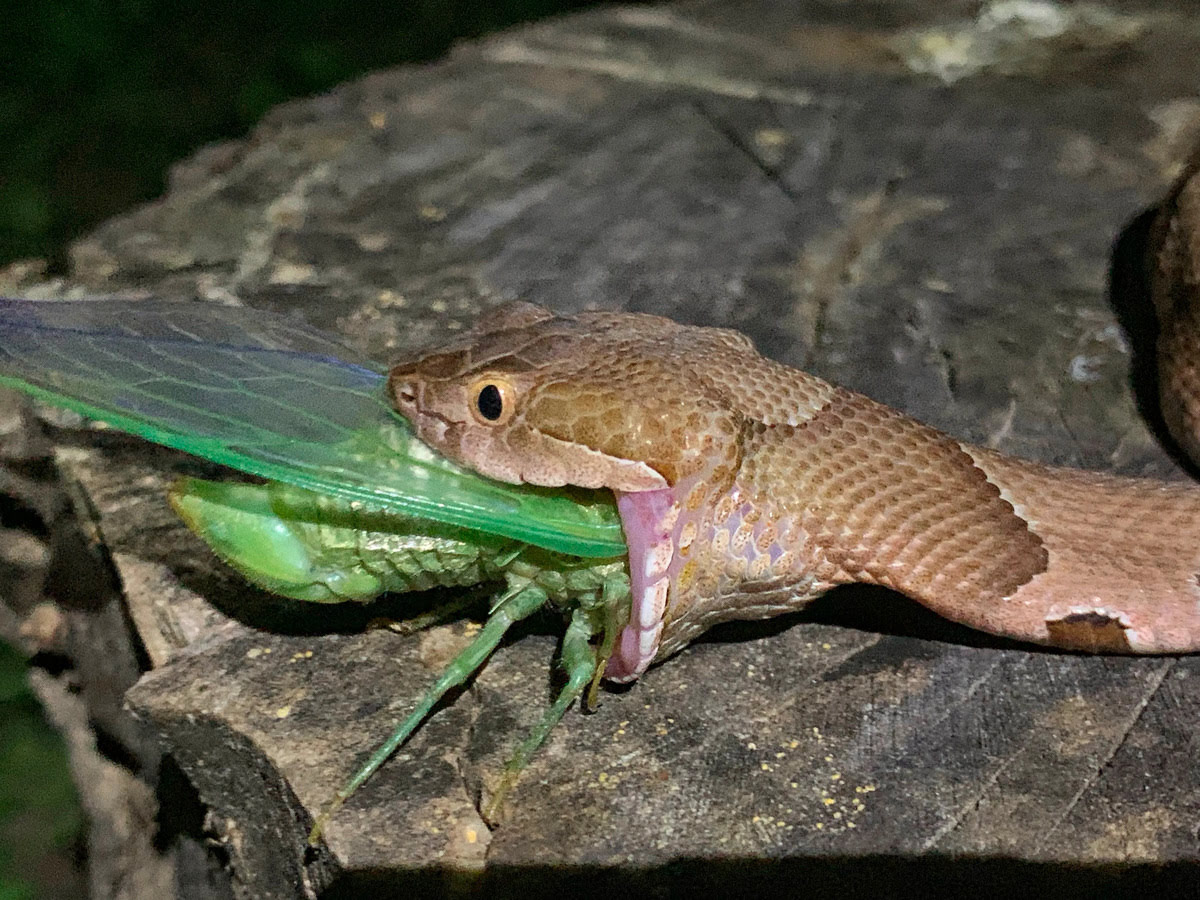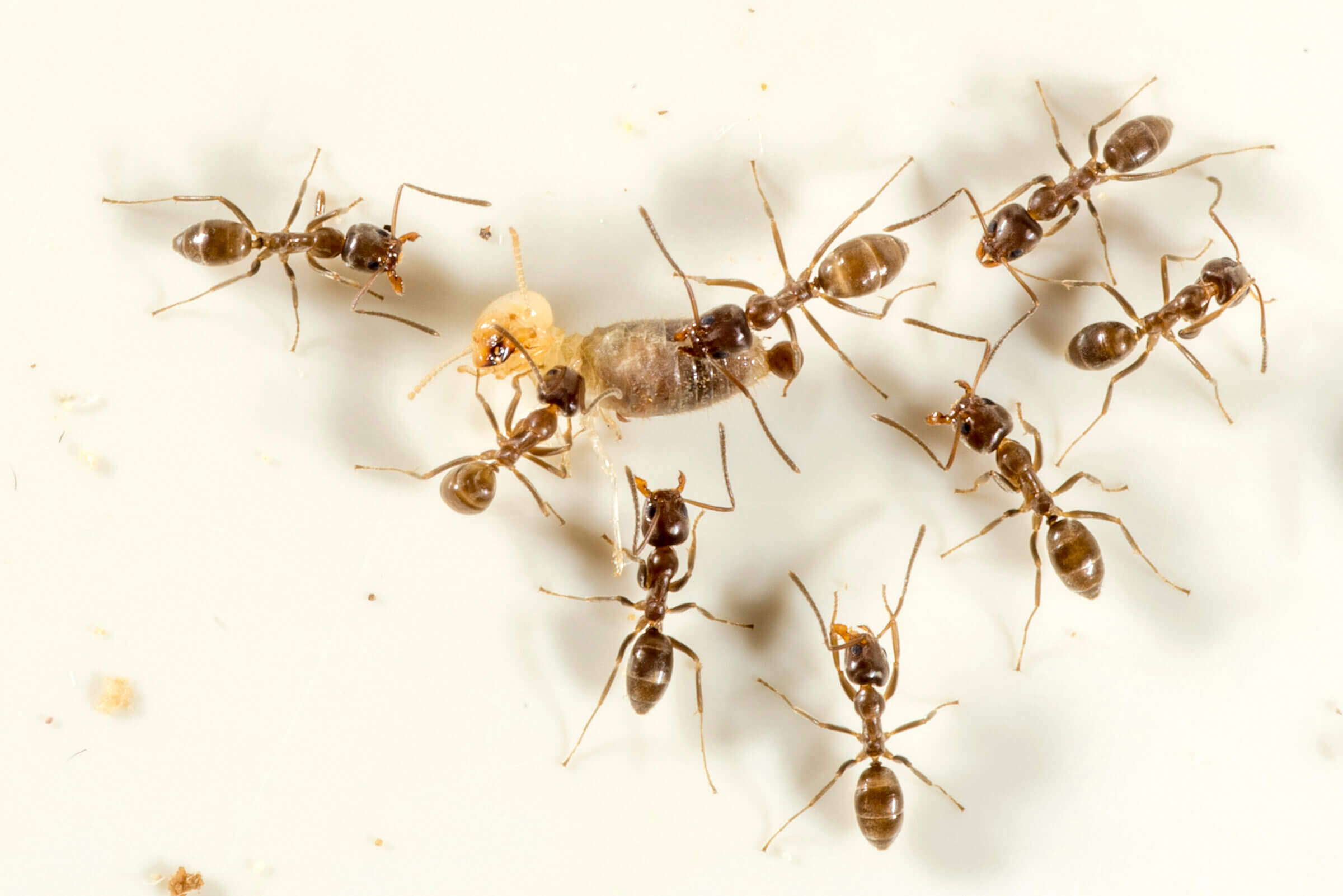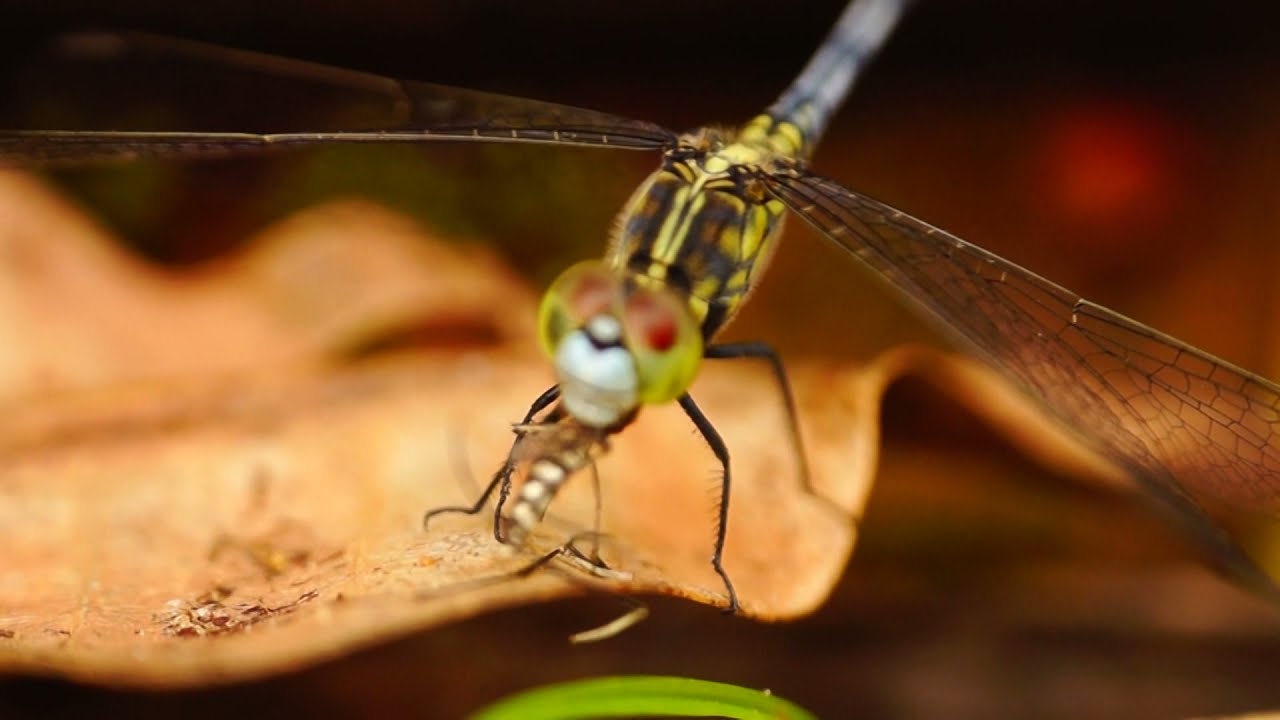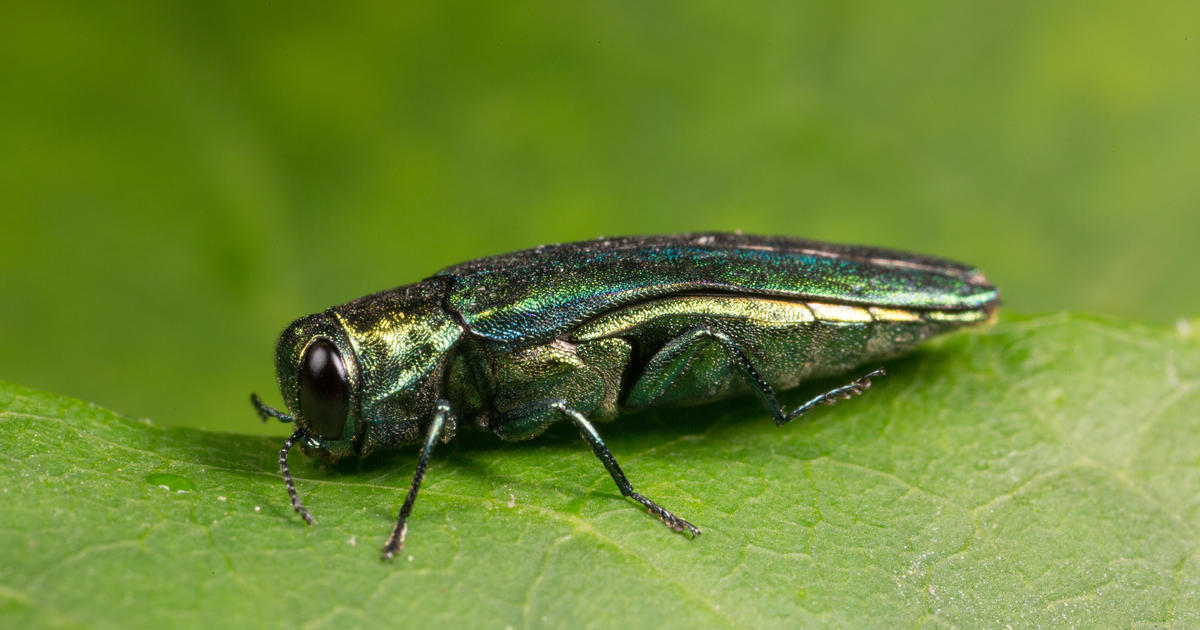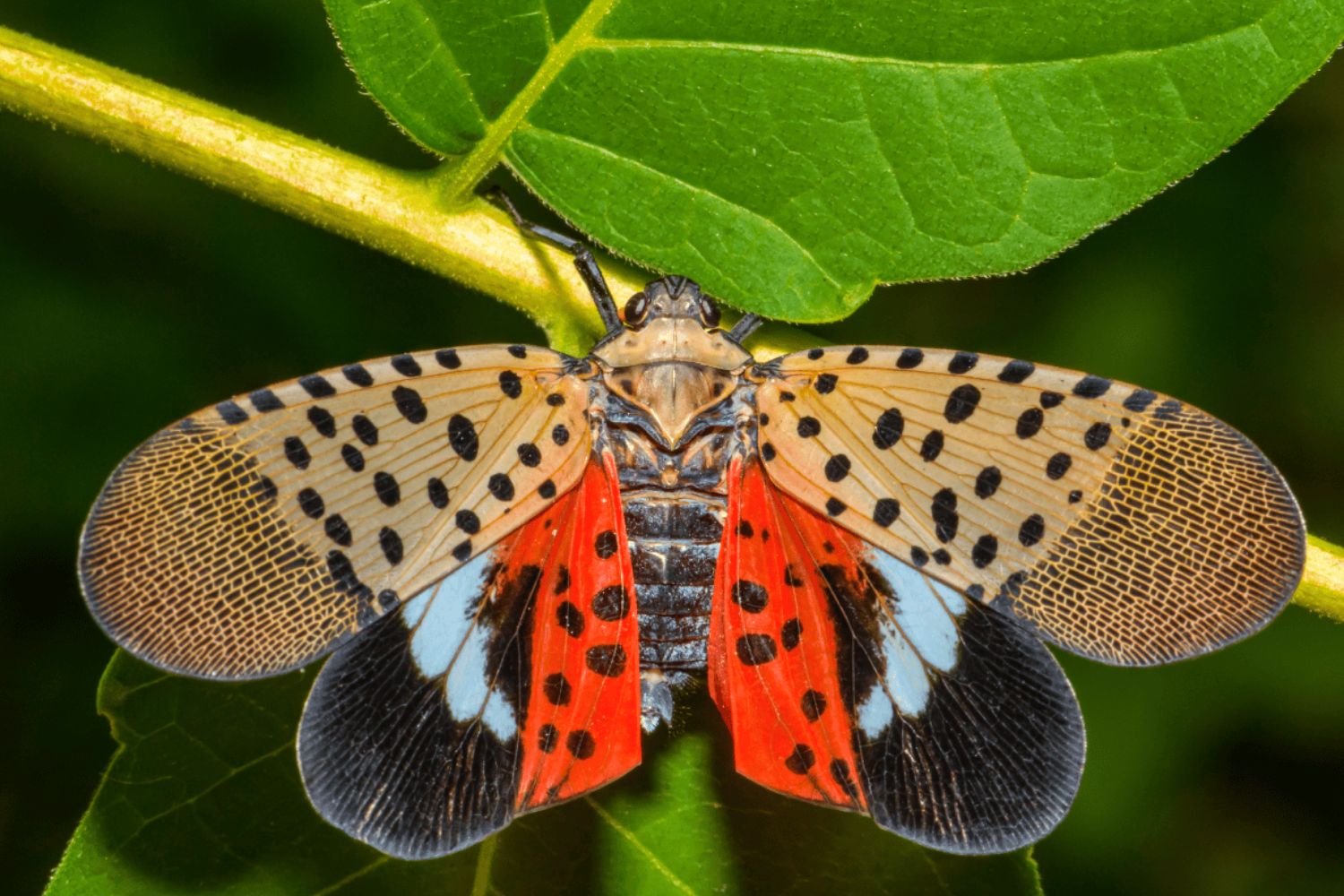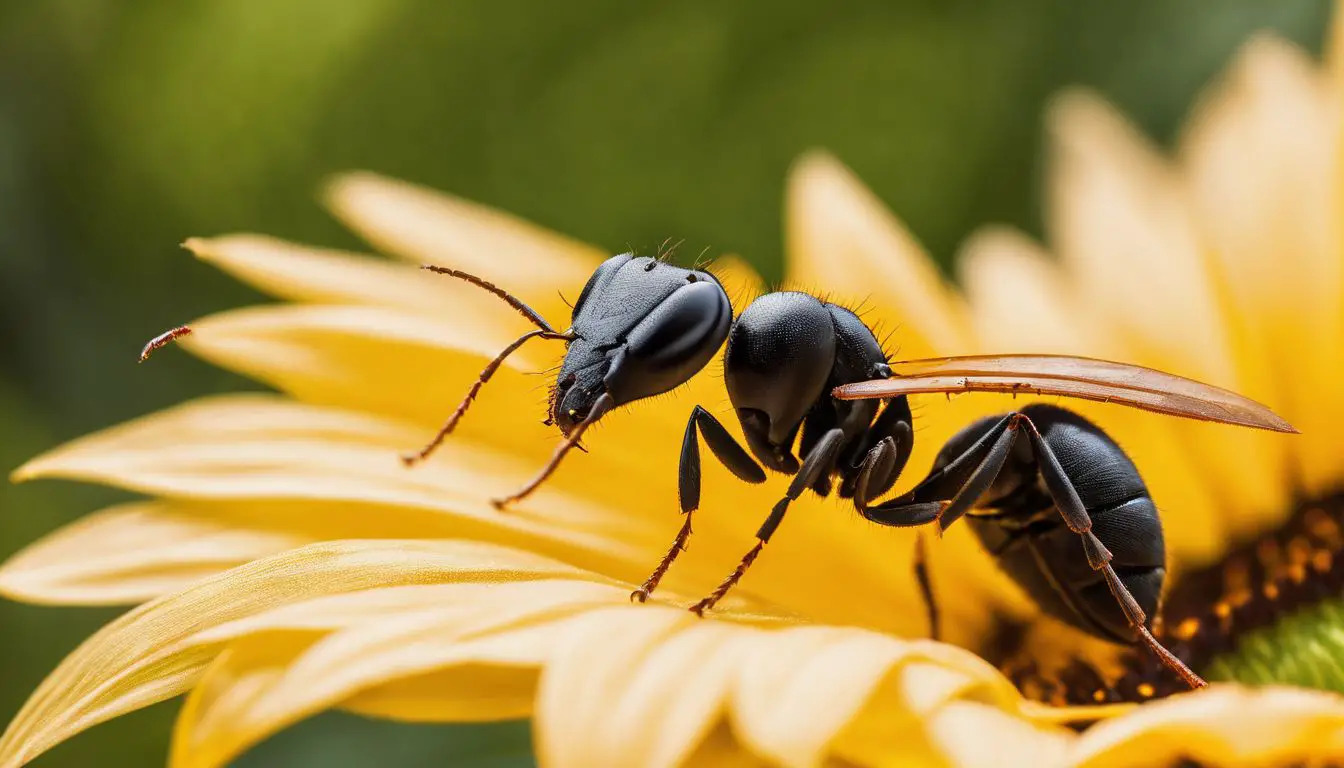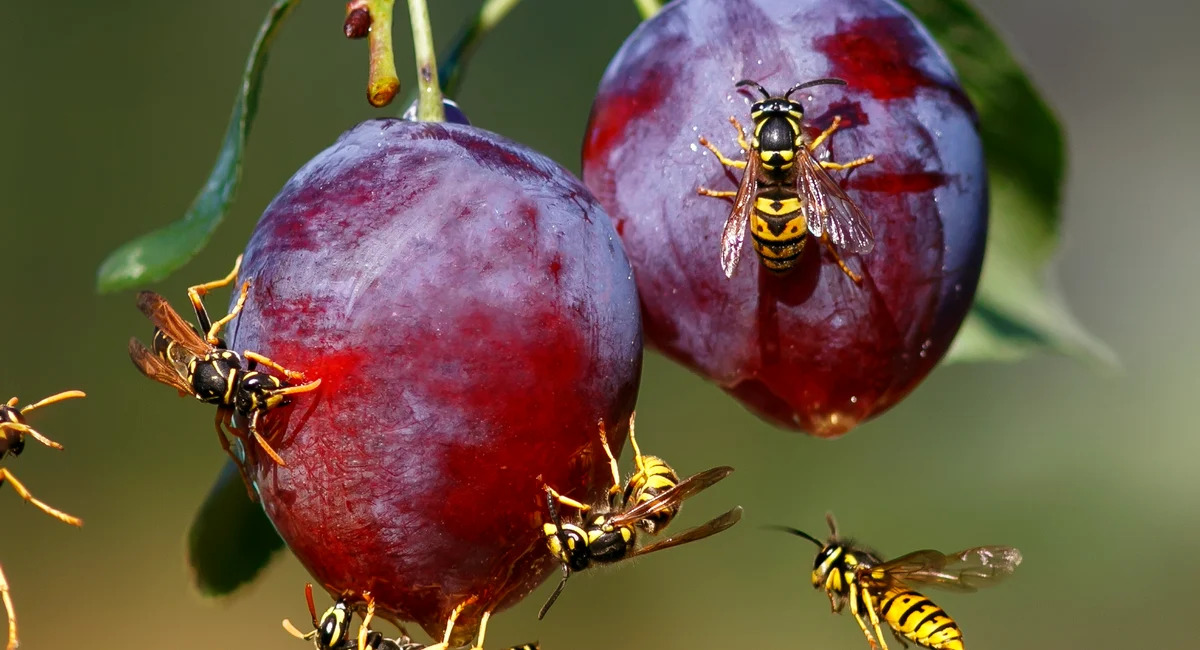Home>Gardening News and Trends>Latest News>What Insects Eat Aphids


Latest News
What Insects Eat Aphids
Published: December 8, 2023
Discover the Latest News on What Insects Eat Aphids and How It Can Help Your Garden! Exploring the natural strategies insects employ to control aphid populations and boost plant health.
(Many of the links in this article redirect to a specific reviewed product. Your purchase of these products through affiliate links helps to generate commission for Chicagolandgardening.com, at no extra cost. Learn more)
Table of Contents
Introduction
Aphids, also known as plant lice, are tiny insects that can cause significant damage to plants and crops. These small, soft-bodied bugs feed on the sap of plants, depleting them of essential nutrients and weakening their overall health. As a result, aphids can stunt plant growth, distort leaves, and even transmit diseases.
Controlling aphid infestations is crucial for maintaining the health and productivity of plants. While there are various methods to combat aphids, one effective and eco-friendly approach is to encourage the natural predators of aphids to establish in the ecosystem. These natural enemies play a vital role in managing aphid populations, ensuring a balance in the ecosystem.
In this article, we will explore the fascinating world of insects that eat aphids. We will delve into the different types of predators and their behaviors, discussing how they hunt and consume these pesky insects. By understanding the diverse range of creatures that prey on aphids, we can gain insights into natural pest control methods that can safeguard our plants without the need for harmful chemicals.
Aphids: A Brief Overview
Aphids are small insects that belong to the order Hemiptera and the family Aphididae. These pesky little bugs are commonly found on a wide range of plants, including vegetables, fruits, ornamentals, and even trees. With a soft body and a pear-shaped appearance, aphids can range in color from green to yellow, black, brown, or pink.
One of the most striking characteristics of aphids is their ability to reproduce rapidly. Female aphids can give birth to live young without mating, a process known as parthenogenesis. This means that a single aphid can quickly give rise to a large population, creating a potential threat to plant health within a short span of time.
Aphids feed by piercing the stems, leaves, or buds of plants and extracting sap with their needle-like mouthparts. As they feed, they release honeydew, a sticky substance that attracts other insects, such as ants. The honeydew can also create the perfect environment for the growth of black, sooty mold, further damaging the plants.
Aside from directly causing damage to plants through their feeding habits, aphids can also transmit plant viruses. These viruses can have devastating effects on crop yields and overall plant health. As such, controlling aphids is essential not only for preventing direct damage but also for reducing the risk of viral infections.
To effectively manage aphid populations, it is important to understand their life cycle. Aphids undergo incomplete metamorphosis, which means they go through several nymph stages before maturing into adults. The nymphs resemble smaller versions of the adults and can also feed on plants. This rapid development and ability to reproduce quickly make it crucial to intervene early to prevent widespread infestations.
Natural Enemies of Aphids
In nature, a delicate balance exists between pests and their predators. Aphids have evolved multiple strategies to defend themselves against their natural enemies, but fortunately, there are several beneficial organisms that feed on aphids and help keep their populations in check.
One group of natural enemies is predatory insects, which actively hunt and consume aphids. Ladybugs, also known as lady beetles or ladybirds, are perhaps the most well-known aphid predators. These colorful insects feed on vast numbers of aphids during both their adult and larval stages. Ladybugs can devour hundreds of aphids a day, making them incredibly effective agents of pest control.
Another voracious predator of aphids is the lacewing. Lacewing larvae, commonly referred to as “aphid lions,” have a remarkable appearance with their elongated bodies and prominent jaws. These larvae are fierce hunters, preying on aphids and other small insects by impaling them with their sharp mandibles. A single lacewing larva can consume dozens of aphids in a day.
Hoverflies, also known as flower flies or syrphid flies, are not only beneficial pollinators but also important predators of aphids. Adult hoverflies feed on nectar and pollen, while their larvae, known as “aphid maggots,” devour aphids with an insatiable appetite. Hoverfly larvae have a distinctly cylindrical body with a tapered head that allows them to crawl deep into aphid colonies and feed on the unsuspecting pests.
Parasitic wasps are another group of natural enemies that play a significant role in controlling aphid populations. These tiny, stingless wasps lay their eggs inside aphids, effectively turning them into living nurseries for their developing offspring. The wasp larvae feed on the internal tissues of the aphids, eventually causing their death. One example of a parasitic wasp that targets aphids is the Aphidius species.
Aside from insects, other organisms also contribute to aphid control. Birds such as sparrows, finches, and chickadees often include aphids in their diet, especially during the breeding season when they need extra protein for their nestlings. Some spiders, like the crab spider and the orb-weaving spider, are known to capture aphids in their webs.
Predatory Insects That Eat Aphids
Aphids are a favored food source for many predatory insects that help control their populations in gardens and agricultural fields. These insects have developed specialized adaptations and behaviors to efficiently hunt and consume aphids.
Ladybugs, also known as lady beetles or ladybirds, are among the most well-known predators of aphids. These small, colorful beetles have a voracious appetite for aphids and can consume dozens of them in a day. Ladybugs are equipped with strong mandibles that allow them to chew through the soft bodies of aphids. They are also attracted to aphid-infested plants by the scent of honeydew and aphid pheromones.
Green lacewings are another group of predatory insects that feed on aphids. The larvae of green lacewings, known as aphid lions, have long, slender bodies with large, sickle-shaped jaws. These jaws are perfectly designed for piercing and sucking the body fluids of aphids. Green lacewing adults, while primarily feeding on nectar, also consume small insects, including aphids.
Hoverflies, also called flower flies or syrphid flies, are not only valuable pollinators but also important aphid predators. Adult hoverflies feed on nectar and pollen, but it is their larval stage that actively hunts and eats aphids. Hoverfly larvae, commonly known as aphid maggots, have a distinctive appearance with a cylindrical body and a tapering head. They crawl among aphid colonies and use their mouthparts to grasp and consume aphids.
Assassin bugs, known for their predatory behavior, are also effective aphid hunters. These bugs have a long tubular mouthpart, called a beak, which they use to inject a deadly saliva into their prey. The saliva contains enzymes that break down the internal tissues of aphids, allowing the assassin bug to suck up the liquefied contents. Some species of assassin bugs, like the wheel bug, are known to be particularly adept at capturing and consuming aphids.
Praying mantises are large, charismatic insects that are known to be generalist predators. While they are not exclusively focused on aphids, mantises will readily consume aphids when given the opportunity. Their sharp mandibles and powerful forelegs allow them to seize and devour aphids with ease.
In addition to these prominent predators, there are many other insect species that feast on aphids, including certain types of beetles, spiders, and ants. By harnessing the power of these natural predators, gardeners and farmers can reduce aphid populations and limit the need for chemical pesticides.
Parasitic Wasps: Aphid Killers
Parasitic wasps are an essential part of the natural control system for aphids. These tiny wasps have developed a fascinating strategy to combat aphid infestations, using aphids as hosts for their developing offspring.
There are several species of parasitic wasps that specifically target aphids. One well-known example is the Aphidius species. These tiny wasps, typically no larger than a few millimeters, lay their eggs inside aphids. The female wasp paralyzes the aphid with her stinger and deposits a single egg within the aphid’s body. Each individual wasp can parasitize numerous aphids during its lifetime.
Once inside the aphid, the wasp egg hatches, and the wasp larva begins to feed on the internal tissues of the aphid. As the larva grows, it consumes the aphid’s vital organs, eventually causing its death. The parasitic wasp larva then forms a pupa inside the aphid’s hollowed-out body, protected from external threats.
After a period of development, the adult parasitic wasp emerges from the aphid mummy. These adult wasps are often smaller and less noticeable than their larger, more colorful counterparts like ladybugs or lacewings. The newly emerged parasitic wasps are ready to search for more aphids, continuing the cycle of parasitism and helping to control aphid populations.
Parasitic wasps have a remarkable ability to locate aphids, even under dense foliage. They are attracted to the chemical cues released by aphids, such as hormones and alarm pheromones. This ability to detect aphid-infested plants allows parasitic wasps to efficiently find hosts for their offspring.
One of the advantages of using parasitic wasps for aphid control is their effectiveness at targeting aphid species without harming beneficial insects or plants. Unlike chemical pesticides, which can have broad-spectrum effects, parasitic wasps are specific in their host choice and have co-evolved with aphids to optimize their survival and reproduction.
Parasitic wasps are often used in biological control programs to manage aphids in agricultural settings. These programs involve releasing laboratory-reared parasitic wasps into the field, where they can seek out and parasitize aphids. By introducing natural enemies like parasitic wasps, farmers can reduce aphid populations and minimize the need for chemical insecticides, promoting sustainable and environmentally-friendly pest management practices.
Insect Larvae That Feed on Aphids
When it comes to controlling aphid populations, the larvae of various insect species play a crucial role. These voracious larvae have developed specialized adaptations to effectively hunt and consume aphids as a primary food source.
Ladybug larvae, also known as ladybird larvae, are among the most well-known aphid predators. Unlike their adult counterparts, ladybug larvae have a different appearance, resembling tiny, spiky alligators. They actively search for aphid colonies on plants, using their sharp jaws to grasp and chew through the soft bodies of their prey. Ladybug larvae are known for their immense appetite and can consume a remarkable number of aphids during their relatively short larval stage.
Lacewing larvae, commonly called “aphid lions,” are another group of insect larvae that feast on aphids. These larvae possess long, sickle-shaped jaws that they use to impale and feed on aphids. Lacewing larvae are fierce predators that actively patrol plants to locate and consume aphids. Their spiky appearance acts as a deterrent to potential predators, making them efficient hunters in aphid-infested environments.
Hoverfly larvae, also referred to as aphid maggots, are renowned for their appetite for aphids. These legless maggots have a cylindrical body with a tapered head, allowing them to easily navigate among aphid colonies. The larvae are equipped with mouthparts that enable them to grasp and consume aphids. They actively seek out aphid infestations, providing effective biological control by significantly reducing aphid populations in gardens and agricultural fields.
Some species of parasitic wasps also have larval stages that consume aphids. The wasp larvae are internal parasites, developing inside aphids before emerging as adult wasps. During their development, these larvae feed on the internal tissues of the aphids, causing their eventual demise. The emerging adult wasps then continue the cycle by parasitizing more aphids, contributing to long-term aphid control.
In addition to these specific insect larvae, there are other generalist predators that also include aphids in their diet. Ground beetles, for example, are known to feed on aphids, among other small insects. These fast-moving beetles have strong mandibles that enable them to capture and consume aphids. Similarly, certain species of spiders, such as crab spiders, actively hunt aphids, either by ambushing them or capturing them in their webs.
The presence of insect larvae that feed on aphids is essential for maintaining ecological balance and controlling aphid populations naturally. Their predation helps prevent unchecked aphid infestations and reduces the need for chemical interventions. This, in turn, promotes a healthier ecosystem, benefiting both plants and other beneficial insects in the process.
Behavioral Adaptations of Insects That Eat Aphids
Insects that feed on aphids have developed various behavioral adaptations that enhance their efficiency in hunting, capturing, and consuming these pest insects. These adaptations allow them to successfully locate and extract nutrients from their prey while minimizing the risks associated with their predatory lifestyle.
One notable behavioral adaptation is the ability of predatory insects to detect and locate aphid colonies. Aphids release pheromones and other chemical signals that attract predators. Ladybugs and lacewings, for example, have a remarkable ability to sense these chemical cues, allowing them to pinpoint the presence of aphid infestations. This detection mechanism enables them to efficiently focus their hunting efforts on areas with a high concentration of aphids.
Predatory insects also exhibit specific hunting behaviors when targeting aphids. Ladybug larvae, lacewing larvae, and hoverfly larvae actively patrol plants, moving their bodies in deliberate motions to search for aphid colonies. They use their keen vision to detect the presence of prey and their sensitive antennae to track the pheromones emitted by aphids. These behaviors ensure that they cover a wide area and maximize their chances of encountering and capturing aphids.
Once predators have located an aphid, they employ various strategies to ensure successful capture and consumption. Ladybug larvae have strong mandibles that allow them to grasp and chew through the soft bodies of aphids. They employ a combination of quick movements and precise biting to incapacitate their prey. Lacewing larvae impale aphids on their sickle-shaped jaws, immobilizing them before feeding on their body fluids.
Hoverfly larvae have a distinct feeding behavior when it comes to consuming aphids. They crawl among aphid colonies, using their mouthparts to grasp and suck the body fluids of aphids. They are known for consuming aphids by puncturing their bodies and extracting their content, leaving behind only empty exoskeletons.
Another behavioral adaptation of insects that eat aphids is their ability to defend themselves against potential threats. Ladybugs and lacewings, for example, have spines or bristles on their larvae’s bodies, serving as a deterrent to predators. These physical defenses make them more challenging to handle or consume, increasing their chances of survival.
Furthermore, these predatory insects exhibit cannibalistic tendencies, especially when prey resources are scarce. Ladybugs and lacewing larvae, if deprived of aphids, will resort to consuming the larvae of their own species. This behavior ensures their survival and allows them to sustain themselves until a fresh prey source becomes available.
In summary, insects that eat aphids display a range of behavioral adaptations to optimize their hunting efficiency and increase their chances of successfully capturing and consuming their prey. These adaptations involve the detection of aphid colonies, specific hunting behaviors, specialized feeding strategies, and defense mechanisms. Understanding these behaviors provides valuable insights into the intricate dynamics between aphids and their natural predators, contributing to the development of sustainable pest management practices.
Other Organisms That Consume Aphids
In addition to insects, several other organisms play a role in controlling aphid populations by consuming these pest insects. These organisms include birds, mammals, and even certain plant species.
Birds are natural predators of aphids and play a significant role in keeping their numbers in check. Many species of birds, including sparrows, finches, and chickadees, include aphids as part of their diet, especially during the breeding season when they need to provide protein-rich food to their nestlings. Birds can often be seen foraging on plants and trees, picking aphids off the foliage and stems as a readily available food source.
Some mammals also rely on aphids as a source of nutrition. Bats, particularly certain species that are insectivorous, may consume aphids during their nighttime foraging activities. Bats have the ability to detect the high-frequency ultrasound calls produced by aphids, aiding them in finding and capturing these tiny insects in flight.
In an intriguing display of natural pest control, certain plant species have evolved to attract predators of aphids. These plants release specific volatile compounds that attract beneficial insects, such as ladybugs, lacewings, and parasitic wasps. By attracting these predators, the plants create an environment that favors the natural suppression of aphid populations. In turn, the plants benefit from reduced aphid damage and can allocate more resources to growth and reproduction.
Ants, though not direct predators of aphids, often play a role in interacting with aphid populations. While some ant species may protect aphids and benefit from feeding on their honeydew excretions, other ants act as predators and prey on aphids directly. These predatory ants are known to actively hunt aphids and consume them as a source of food.
Furthermore, spiders are adept hunters that can capture aphids in their webs. Crab spiders and orb-weaving spiders often build their webs near or within aphid-infested plants. When an aphid becomes entangled in the spider’s web, the spider quickly moves in to subdue and consume its prey.
In nature, the diverse array of organisms that consume aphids contributes to maintaining a balanced ecosystem. These predators, ranging from birds and mammals to certain plants and spiders, provide an additional layer of control over aphid populations. By harnessing the natural predators and ecological processes, gardeners and farmers can foster a more sustainable and eco-friendly approach to managing aphids and maintaining the health of their plants.
Conclusion
The world of insects that eat aphids is teeming with a diverse array of natural predators and organisms that contribute to the control of these pesky plant pests. Ladybugs, lacewings, hoverflies, and parasitic wasps are just a few examples of the insect superheroes that actively hunt and consume aphids, preventing unchecked infestations and reducing the need for chemical pesticides.
These insects have evolved a range of behavioral adaptations to enhance their efficiency in locating, capturing, and consuming aphids. From detecting chemical signals to employing specialized feeding strategies, they have mastered the art of aphid control. The larvae of these insects, with their insatiable appetites, are particularly effective at decimating aphid populations.
But the aphid-eating ensemble doesn’t end with insects alone. Birds, mammals, certain plants, and even spiders contribute in their own unique ways to the suppression of aphid numbers, creating a balanced ecosystem where aphids are kept in check without causing widespread damage.
Understanding and harnessing these natural predators and ecological processes offer sustainable and environmentally-friendly alternatives to chemical interventions. By promoting biodiversity and creating habitats that attract beneficial insects, gardeners and farmers can encourage a natural balance that supports healthy plant growth and reduces the reliance on harmful pesticides.
While aphids may be a persistent nuisance in gardens and agricultural fields, these voracious predators and diverse organisms provide a glimmer of hope for managing aphid populations. By embracing natural pest control methods and working in harmony with nature, we can protect our plants, preserve ecosystems, and create a healthier environment for all.

